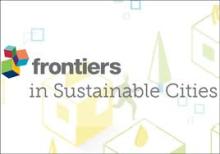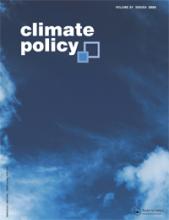Publications

|
Anindya Sinha Structure and Functions of Gesture Sequences in Wild Bonnet Macaques (Macaca radiata) https://www.biorxiv.org/content/10.1101/2024.03.18.585581v1 Co-Authored with Shreejata Gupta. BioRxiv Preprint Nonhuman primates – mostly apes – are known to combine gestural units in non-random ways, but they do not make novel meaning with these combinations. In this paper, we investigated, for the first time, the structure and functions of gesture sequences in the naturally occurring communication of wild bonnet macaques, using analyses akin to ape gesture studies. We discuss our findings in the light of a possibility that primate gesture sequences, coordinating the flow of social interactions, may be evolutionary precursors to pragmatic gestures in human language. |

|
C P Rajendran Tectonics of the Northwestern, Sikkim and Eastern Himalaya https://link.springer.com/article/10.1007/s43538-024-00255-4 co-authored with Jain, A.K., Mukul, M., Pant, N.C., Mukherjee, P.K., Singh, P., Singh, T., Pebam, J., Singh, P., Deshmukh, G.G. and Dixit, R. Proceedings of the Indian National Science Academy During the period 2020–2024, scientific investigations in the Himalaya incorporated various geological, geochemical and geochronological aspects of evolution of this mountain, including large-scale configuration and evolutionary models, determining of major unconformities in the Lesser Himalaya, integrated structure and geochronology of major tectonic boundaries, geochemistry and U–Pb dating of the Abor Volcanics, exhumation patterns using fission track zircon and apatite. Many Neoproterozoic and Paleozoic magmatic bodies were dated using U–Pb zircon methods from the Lesser Himalayan Jutogh Group metamorphics and Greater Himalayan Sequence. Active tectonic patterns from the frontal Sub-Himalaya belt are also worked out. |

|
Shaik Vazeed Pasha BRICS Young Scientists and Innovators Forum https://www.currentscience.ac.in/Volumes/126/05/0530.pdf Co-Authored with Sanjeev Kumar Varshney & Arindam Bhattacharyya. Current Science (00113891) 126.5 (2024). |

|
G Parthasarathy Mineral chemistry of Mahadevpur H4/5 chondrite: characterization of nanodiamonds through micro-Raman spectroscopic studies https://www.currentscience.ac.in/Volumes/126/05/0574.pdf Co-Authored with B J. Saikia, N. V. Chalapathi Rao, Vikas Seth and R R. Borah. Current Science 126(5) pp.574-582 This paper presents for the first time comprehensive spectroscopic studies on the Mahadevpur H4/5 chondrite using Electron Probe Micro Analysis (EPMA) and laser micro-Raman spectroscopic techniques. The micro-petrography reveals a coarse to medium crystalline chondritic texture with various morphological features dispersed in a relatively medium to fine crystalline matrix, which appeared in the cover page of the journal. We found that Mahadevpur meteorite has experienced the shock stage of S4 corresponds to 30–35 GPa. This is independently validated by XRD technique and observation of nanodiamonds. |

|
Gufran Beig Anthropogenic trace gases and their linkages to meteorology and climate change https://www.frontiersin.org/articles/10.3389/frsc.2024.1379626/full Co-Authored with Yadav R, Anand V, Sahu SK, Kunchala, RK, Tyagi B. Frontier in Sustainable Cities, Vol.6 |

|
Anmol Chowdhury A ‘South within the South’: writing from more-than-human entanglements in Guwahati, India https://www.tandfonline.com/doi/full/10.1080/14702541.2024.2324124 Co-Authored with Sneha Gutgutia, Shruti Ragavan & Shubhangi Srivastava. Scottish Geographical Journal This paper attempts to theorize from two peripheries within the Indian ‘knowledge production nexus’: one which is spatial vis-à-vis a ‘peripheral’ city; and the other which is relational vis-à-vis more-than-human relations in the city. Drawing from Southern and postcolonial urban theory and more-than-human geographies, we postulate that first, the city of Guwahati in North-East India remains a ‘South within the South’ as a site to theorize from, and second, the everyday enmeshed lives and relations of animals within this landscape remain negligible within the above-mentioned discursive nexus. In a parallel enquiry over ‘other Souths’ and ‘other lifeforms’, we explore animals’ geographies in Guwahati, finding potential in the framing of ‘entanglements’ to encapsulate varied relations with pigs, rhesus macaques, bovines, and dogs – both historically and in the contemporary. More-than-human entanglements, we contend, unveil more-than-human material, spatial, and liminal relations in the city, striated along economic, gender, caste, and class lines. Such a framing is both located and dislocated, suggestive of a comparative analytic and a plural ethic. |

|
Tejal Kanitkar Equity assessment of global mitigation pathways in the IPCC Sixth Assessment Report https://www.tandfonline.com/doi/full/10.1080/14693062.2024.2319029 Co-Authored with Akhil Mythri & T. Jayaraman, Climate Policy This paper analyses 556 model scenarios assessed by IPCC’s Working Group-III for the 6th Assessment Report, which have an underlying 10-region classification and correspond to restricting warming levels to 1.5 ℃ and 2 ℃. We show that across all scenarios, the current global inequalities in incomes, energy use, and emissions, are projected to continue even in 2050. Scenarios also project higher per capita fossil fuel use and lower carbon dioxide removal in developed countries in 2050 compared to developing countries. Our results demonstrate the scale and scope of unequal outcomes in these scenarios, that have been anticipated by theoretical critiques of the underlying models. The paper explores the potential reasons for the unequal outcomes of the scenarios focusing on the two key issues of scenario design and modelling framework. Our analysis also suggests that instead of summary assessments focusing on singular median values or percentile ranges, as undertaken in the IPCC report, more could be learned from focusing on differences between models or considering outliers that could present new and innovative solutions to the determination of equitable and efficient future mitigation pathways. Our analysis underlines the need for new frameworks for emissions modelling and scenario building, for constructing possible futures that can also foreground equity and climate justice. |

|
Rudrodip Majumdar Technological Trends in Electric Passenger Car Segment in India and Medium-Term Demand for Magnet-Based Rare Earth Materials https://www.igi-global.com/chapter/technological-trends-in-electric-passenger-car-segment-in-india-and-medium-term-demand-for-magnet-based-rare-earth… Co-authored with Arpita Pandey. in D. Lakshmi et al. (eds.) E-Mobility in Electrical Energy Systems for Sustainability, pp. 321-342, IGI Global. The green mobility aspirations of India have necessitated substituting conventional vehicles with electric motor-driven counterparts. The rare earth permanent magnet-based motor is the dominant solution for electric vehicle motor architectures as it ensures energy efficiency with reduced kerb weight and increased vehicle range. This study estimates the magnet-based rare earth demand for the realistic aspirational growth trajectories of electric four-wheelers up to 2030. During the first phase (2021-25), a high year-on-year growth rate for the e-car segment is assumed, which creates the base for electric vehicle penetration, whilst the second phase (2026-30) envisages a rapid product substitution at the cumulative level by 2030. The estimated total demand for rare earth materials during 2021-30 is between 1434 and 3584 tonnes. Analysis indicates that India could leverage its strong position in the global automotive market and geopolitical proximity to the favourable global powers for collaboration in research and development, technology transfer, and securing raw material supply. |
